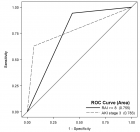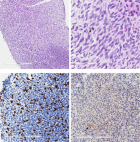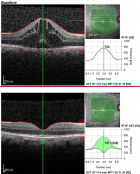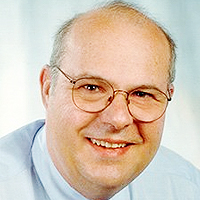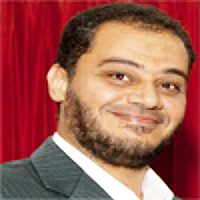Abstract
Research Article
Body mass index in a group of security forces (policemen). Cross-sectional study
Guillermo Padrón Arredondo*
Published: 26 January, 2018 | Volume 2 - Issue 1 | Pages: 001-004
Introduction: Most police officers work long hours in day and night shifts and this exposure can harm your health.
Objective: Know the Body Mass Index (BMI) of a group of policemen of both sexes chosen at random to calculate the degree of overweight / obesity of the observed population.
Material and Method: An cross-sectional study was carried out on 75 elements of the municipal police of sexes, obtaining age, height, and weight with which the corresponding Body Mass Index was obtained. Descriptive statistics were used.
Results: Measurements were taken at 75 (100%) policemen of both of them sexes, 60 (80%) male and 15 (20%) female. And the following results were obtained: ideal weight 5 (6.6%), overweight 21 (28.0%) elements and obesity 49 (65.3%).
Discussion: Obese workers are prone to getting sick, missing work, disability and early retirement when compared to non-obese workers. Obesity can be a predictor of early mortality; therefore, with a BMI of 30-35, life expectancy decreases from 2 to 4 years and with a BMI of 40-45 it decreases from 8 to 10 years. In our study we found 70 (93.3%) policemen were overweight and obese BMI> 25).
Conclusions: Our findings recommend the implementation of diverse programs for the improvement of the health of this labor group with a multidisciplinary team as well as the adequate physical spaces for the practice of the corresponding activities.
Read Full Article HTML DOI: 10.29328/journal.niogb.1001007 Cite this Article Read Full Article PDF
Keywords:
Police; Obesity; Life expectancy; Exercise, Diet, Mental health
References
- Alghamdi AS, Yahya MA, Alshammari GM, Osman MA. Prevalence of overweight and obesity among police officers in Riyad City and risk factors for cardiovascular disease. Lipids Health Dis. 2017; 16: 79. Ref.: https://goo.gl/ZiWeMq
- Gu JK, Charles LE, Burchfiel CM, Fekedulegn D, Sarkisian K, et al. Long Work Hours and Adiposity Among Police Officers in a US Northeast City. J Occup Environ Med. 2012; 54: 1374-1381. Ref.: https://goo.gl/kQ6QH1
- Da Silva FC, Hernandez SS, Gonçalves E, Arancibia BA, Da Silva Castro TL. Anthropometric Indicators of Obesity in Policeman: a Systematic review of observational Studies. Int J Occup Med Environ Health. 2014; 27: 891-901. Ref.: https://goo.gl/mrCG8Y
- Violanti JM, Fekedulegn D, Hartley TA, Andrew ME, Gu JK. Life expectance in police officers: a Comparison with the U.S. General Population. Int J Emerg Ment Health. 2013; 15: 217-228. Ref.: https://goo.gl/JyaQvw
- Ramey SL, Downing NR, Franke WD. Milwaukee police department retirees: cardiovascular disease risk and morbidity among aging law enforcement officers. AAOHN J. 2009; 57: 448-453. Ref.: https://goo.gl/Wn2ZRi
- Richmond RL, Wodak A, Kehoe L, Heather N. How healthy are the police? A survey of life-style factors. Addiction. 1998; 93: 1729-1737. Ref.: https://goo.gl/tcb7ir
- Nedeltcheva AV, Kilkus JM, Imperial J, Kasza K, Schoeller DA, et al. Sleep curtailment is accompanied by increased intake of calories from snacks. Am J Clin Nutr. 2009; 89: 126-133. Ref.: https://goo.gl/LqbafP
- Yang L, Duan D, Duan C, Li Z, Liu Y. Health status analysis of Guangzhou traffic police officers in 2013. Zhonghua Lao Dong Wei Sheng Zhi Ye Bing Za Zhi. 2014; 32: 418-420. Ref.: https://goo.gl/u11umA
- Violanti JM, Fekedulegn D, Andrew ME, Charles LE, Hartley TA, et al. Adiposity in policing: mental health consequences. Int J Emerg Ment Health. 2011; 13: 257-266. Ref.: https://goo.gl/pxsR8M
- Garbarino S. 24-hour work: the interaction of stress and changes in the sleep-wake cycle in the police force. G Ital Med Lav Ergon. 2014; 36: 392-396. Ref.: https://goo.gl/8vxHLf
- Rajaratman SM, Barger LK, Lockley SW, Shea SA, Wang W, et al. Sleep disorders, health, and safety in police officers. JAMA. 2011; 306: 2567-2578. Ref.: https://goo.gl/BiSgFC
- Baughman P, Fekedulegn D, Andrew ME, Nedra Joseph P, Dorn MJ, et al. Central Adiposity and Subclinical Cardiovascular Disease in Police Officers. ISRN Obes. 2013. Ref.: https://goo.gl/33Ryik
- Can SH, Hendy HM. Behavioral Variables Associated with Obesity in Police Officers. Ind Health. 2014; 52: 240-247. Ref.: https://goo.gl/Yisr6Y
- Sandoval Jaramillo ML, Marcel Pesantez T, Carrasco Coca OR. Incidencia de las actividades físico-recreativas en la condición física de mujeres aspirantes a policías de la Provincia de Pichincha. Educ Fis Dep, Rev Dig. Buenos Aires. 2015; 20: 10.
- Da Silva R, Matos C, Valdivia B, Cascaes F, Barbosa P. Revisión Sistemática de la Actividad Física y de la Salud de Policías. Rev Med. 2013; 21: 75-85. Ref.: https://goo.gl/hsZYsr
Similar Articles
-
The interaction between photonic technology and physical exercise: The action of low-level laser therapyAntonio Eduardo de Aquino Jr*,Fernanda Mansano Carbinatto. The interaction between photonic technology and physical exercise: The action of low-level laser therapy. . 2017 doi: 10.29328/journal.hodms.1001003; 1: 010-013
-
Behavioral factors of Abdominal Obesity and effects of lifestyle changes with Fiber AdequacyRoberto Carlos Burini*,Hugo Tadashi Kano,Mariana Santoro Nakagaki,Patricia Baston Frenhani,Katia Cristina Portero-McLellan. Behavioral factors of Abdominal Obesity and effects of lifestyle changes with Fiber Adequacy. . 2017 doi: 10.29328/journal.hodms.1001004; 1: 014-022
-
Upper gut bacterial overgrowth is a potential mechanism for Glucose Malabsorption after Vertical Sleeve GastrectomyTimothy R Koch*,Timothy R Shope,Matthew E Sharbaugh. Upper gut bacterial overgrowth is a potential mechanism for Glucose Malabsorption after Vertical Sleeve Gastrectomy. . 2017 doi: 10.29328/journal.hodms.1001006; 1: 030-035
-
Body mass index in a group of security forces (policemen). Cross-sectional studyGuillermo Padrón Arredondo*. Body mass index in a group of security forces (policemen). Cross-sectional study. . 2018 doi: 10.29328/journal.niogb.1001007; 2: 001-004
-
Herbal approach for obesity managementPreeti Singh*. Herbal approach for obesity management. . 2018 doi: 10.29328/journal.niogb.1001008; 2: 005-016
-
Dietary and Lifestyles assessment among Obese Women in Gaza City, PalestineMarwan O Jalambo*,Basil Kanoa,Mohammed S Ellulu,Smaher Younis,Mueen El-Kariri. Dietary and Lifestyles assessment among Obese Women in Gaza City, Palestine. . 2018 doi: 10.29328/journal.niogb.1001009; 2: 017-025
-
Obesity-Treatment by drugsSahithi G*. Obesity-Treatment by drugs. . 2019 doi: 10.29328/journal.niogb.1001010; 3: 001-001
-
ECHO…for a change!!Manish Motwani*,Rajeev Palvia,Bhavesh Nanda,Mahek Motwani,Bhakti Chaubal,Jyoti Kesarkar, Bhakti Mange,Sneha Shukla. ECHO…for a change!!. . 2020 doi: 10.29328/journal.niogb.1001011; 4: 001-003
-
The review of the relationship between UCP2 and obesity: Focusing on inflammatory-obesityMohamadreza Alivand*,Beitullah Alipour*,Sara Moradi,Yaser Khaje-Bishak,Maedeh Alipour. The review of the relationship between UCP2 and obesity: Focusing on inflammatory-obesity. . 2021 doi: 10.29328/journal.niogb.1001015; 5: 001-013
-
Could apple cider vinegar be used for health improvement and weight loss?Alexander V Sirotkin*. Could apple cider vinegar be used for health improvement and weight loss?. . 2021 doi: 10.29328/journal.niogb.1001016; 5: 014-016
Recently Viewed
-
Snow white: an allergic girl?Oreste Vittore Brenna*. Snow white: an allergic girl?. Arch Asthma Allergy Immunol. 2022: doi: 10.29328/journal.aaai.1001029; 6: 001-002
-
Pneumothorax, pneumomediastinum, subcutaneous emphysema: serious complications of asthmaYiannakopoulou E*. Pneumothorax, pneumomediastinum, subcutaneous emphysema: serious complications of asthma . Arch Asthma Allergy Immunol. 2018: doi: 10.29328/journal.aaai.1001014; 2: 016-017
-
The effects of early low dose exposures to the Environmental Estrogen Bisphenol A on the Development of Childhood AsthmaTerumi Midoro-Horiuti*,Randall M Goldblum. The effects of early low dose exposures to the Environmental Estrogen Bisphenol A on the Development of Childhood Asthma. Arch Asthma Allergy Immunol. 2017: doi: 10.29328/journal.haard.1001003; 1: 015-027
-
Management and Therapeutic Strategies for Spinal Muscular AtrophySheena P Kochumon, Cherupally Krishnan Krishnan Nair*. Management and Therapeutic Strategies for Spinal Muscular Atrophy. J Genet Med Gene Ther. 2024: doi: 10.29328/journal.jgmgt.1001009; 7: 001-007
-
The advances and challenges of Gene Therapy for Duchenne Muscular DystrophyJacques P Tremblay*,Jean-Paul Iyombe-Engembe. The advances and challenges of Gene Therapy for Duchenne Muscular Dystrophy. J Genet Med Gene Ther. 2017: doi: 10.29328/journal.jgmgt.1001003; 1: 019-036
Most Viewed
-
Impact of Latex Sensitization on Asthma and Rhinitis Progression: A Study at Abidjan-Cocody University Hospital - Côte d’Ivoire (Progression of Asthma and Rhinitis related to Latex Sensitization)Dasse Sery Romuald*, KL Siransy, N Koffi, RO Yeboah, EK Nguessan, HA Adou, VP Goran-Kouacou, AU Assi, JY Seri, S Moussa, D Oura, CL Memel, H Koya, E Atoukoula. Impact of Latex Sensitization on Asthma and Rhinitis Progression: A Study at Abidjan-Cocody University Hospital - Côte d’Ivoire (Progression of Asthma and Rhinitis related to Latex Sensitization). Arch Asthma Allergy Immunol. 2024 doi: 10.29328/journal.aaai.1001035; 8: 007-012
-
Causal Link between Human Blood Metabolites and Asthma: An Investigation Using Mendelian RandomizationYong-Qing Zhu, Xiao-Yan Meng, Jing-Hua Yang*. Causal Link between Human Blood Metabolites and Asthma: An Investigation Using Mendelian Randomization. Arch Asthma Allergy Immunol. 2023 doi: 10.29328/journal.aaai.1001032; 7: 012-022
-
An algorithm to safely manage oral food challenge in an office-based setting for children with multiple food allergiesNathalie Cottel,Aïcha Dieme,Véronique Orcel,Yannick Chantran,Mélisande Bourgoin-Heck,Jocelyne Just. An algorithm to safely manage oral food challenge in an office-based setting for children with multiple food allergies. Arch Asthma Allergy Immunol. 2021 doi: 10.29328/journal.aaai.1001027; 5: 030-037
-
Snow white: an allergic girl?Oreste Vittore Brenna*. Snow white: an allergic girl?. Arch Asthma Allergy Immunol. 2022 doi: 10.29328/journal.aaai.1001029; 6: 001-002
-
Cytokine intoxication as a model of cell apoptosis and predict of schizophrenia - like affective disordersElena Viktorovna Drozdova*. Cytokine intoxication as a model of cell apoptosis and predict of schizophrenia - like affective disorders. Arch Asthma Allergy Immunol. 2021 doi: 10.29328/journal.aaai.1001028; 5: 038-040

If you are already a member of our network and need to keep track of any developments regarding a question you have already submitted, click "take me to my Query."






